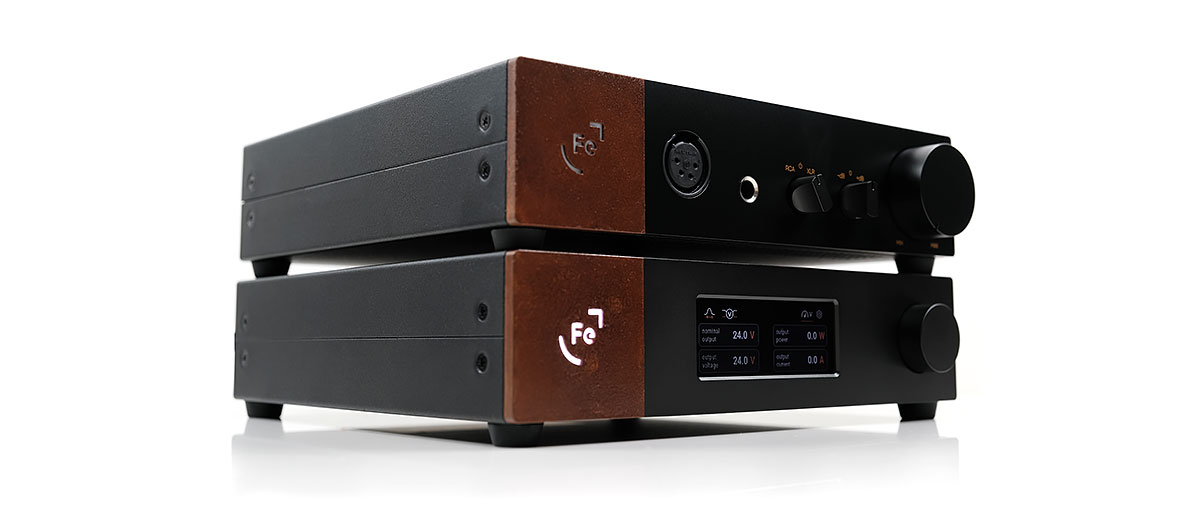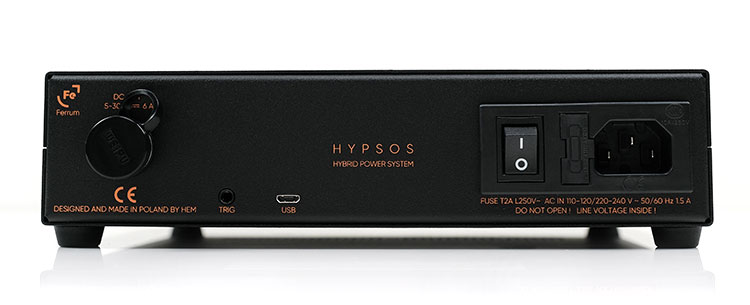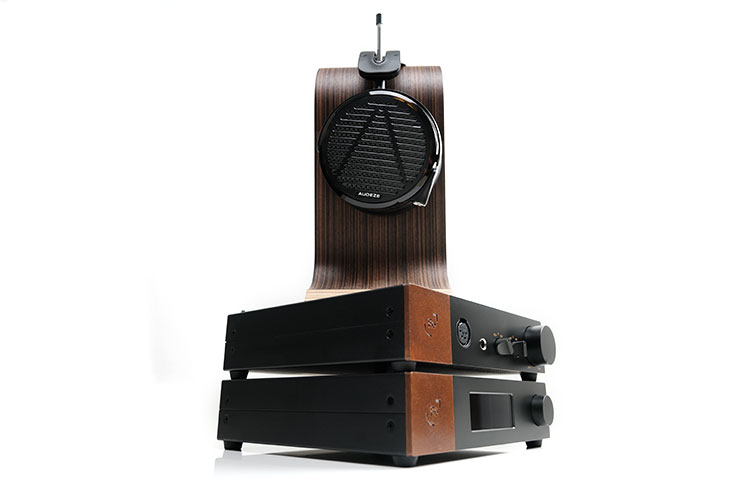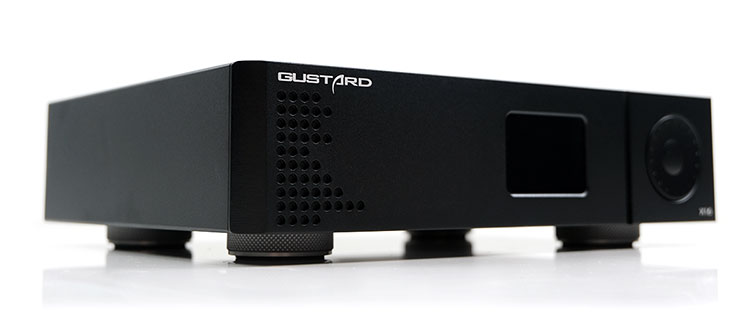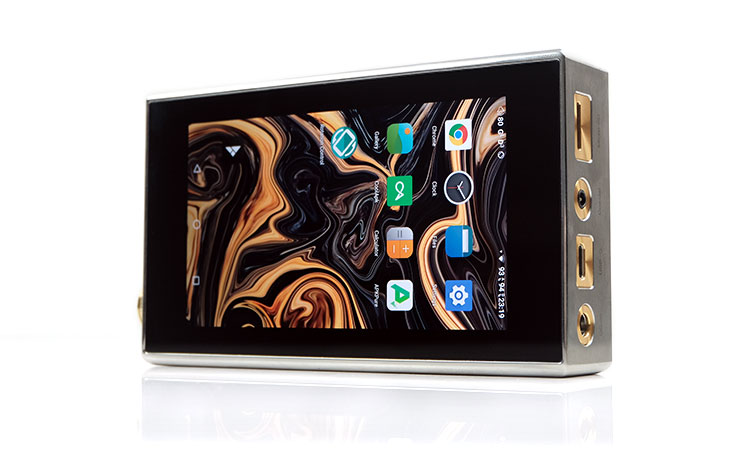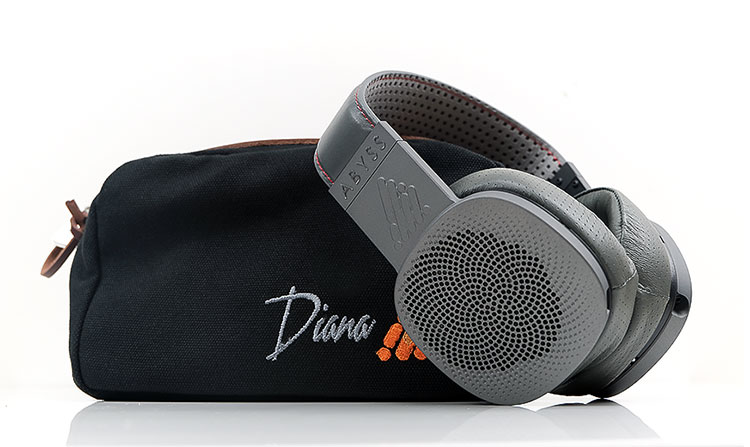Sound Impressions
The following sound impressions were completed with the HYPSOS connected to the OOR at 24V SST using the Abyss Headphones Diana Phi, Susvara, and Audeze LCD-5 headphone pairings.
Summary
The OOR/HYPSOS is the closest I have come in ages to a high-end amplifier I can safely term as ‘gain on a wire’. It is effortless clean, articulate, and ridiculously transparent like a resolving quality mirror on your DAC and source material.
It is also possibly one of the best solid-state analog headphone amplifiers I have tested this year for driving the likes of the Susvara and the Diana Phi purely in terms of dynamic range and resolution. There is a ton of headroom for both so your only bottleneck here is just how good your source is when feeding into the OOR.
Garbage in, garbage out is entirely apt here. And yet, great in and great out only begins to scratch the surface. Remember that mirror description in the opening line of this page? Yup, tonal flavoring is a big factor with the OOR.
Pick something like the Musician Audio Pegasus or the Holo Audio Spring 2 R2R DAC and you will get a smoother emotive analog tone with excellent note texture from the OOR output. Switch to a cleaner DAC such as the Chord Qutest or a line out from the delta-sigma DX300 MAX and you will exactly that, a very clean and pure tone.
And the tinkering does not stop there. The HYPSOS is a difference-maker not just in pairing with the OOR but also in what it can bring to the table with its SST functionality.
The OOR gets a huge lift in terms of dynamism. A standalone softish attack and slightly relaxed treble tighten up and shimmer when paired together. Tweak that SST voltage level with demanding articulate headphones and you get something a lot more aggressive, and precise, with an absolute wall of detail to go along with it.
Timbre
Timbre? What timbre? This is a chameleon, to put it mildly. Sure, I can call it neutral, balanced, and quite linear. Without HYPSOS, the OOR does have a slight softness to its note definition that is underpinned by a better-than-expected punchy bass response.
But just how much of that thinking is my DAC playing tricks on my mind I am honestly not too sure such was the change in tone with every new source I tried.
For example, the opening description I just wrote above was the Gustard X16 with oversampling switched on. Revert to NOS and the change was immediate, sounding dull, flat, and quite rounded with little in the way of treble sparkle. Switch to the superior TT2 DAC lineout and the focus turns to a vibrant midrange, excellent articulation, and a cleaner high-frequency response.
However, there are some consistencies in the OOR/HYPSOS timbre I can pull together purely by some comparison work done with other amps during the review process.
This is not a thick SET lush tone, the attack and decay are fast, the transient response is excellent. However, the OOR does sound smoother at 22V SST compared to 30V and is a little tempered without the HYPSOS in terms of absolute clarity.
It still exudes what I define as a classic solid-state energetic tempo offering a solid, punchy, and fast mid-bass response and excellent clarity through the mids with our best headphone pairings.
Staging
If you are after a grandiose airy soundstage the OOR might not be the right choice for you. It lacks the pure grunt work at the very extremes to satisfy HD800 enthusiasts, for example, However, what it does incredibly well is imaging placement and depth within a relatively rounded and evenly balanced staging quality.
I suspect you can safely compensate with your headphone’s own staging characteristic because everything else, including the accuracy and speed at which spatial information floats in and out already, creates a very engaging acoustical environment.
Susvara fans will not be left wanting but once again, that DAC choice will give you a bit more where you need it. Personally, I found the superbly meaty Little DOT DAC VII to be the best at fleshing out the depth and power where it is required whereas the likes of the DX300 MAX line-out give me the least if the bass is what you are after.
Staging Without HYPSOS
Removing the HYPSOS is like removing an essential limb at this point in my testing with the OOR. Everything sort of shrinks on its own with a slight drop in dynamic range, a little more comparative fuzziness in the imaging, especially through the mids, and a treble that is a shade more relaxed.
The diminution of the staging clarity and top-end presence also contributes to a more intimate staging quality. Ferrum described the sound as weightier and to some extent, they are correct with your ear just dropping down a little to the bass and then the mids slightly behind in presence.
Just to be clear the above description does not mean that without the HYPSOS the OOR is suddenly a bad amp. Rather, the improvement with HYPSOS is palatable and I highly doubt I would want the OOR without the HYPSOS after hearing what this stack is capable of.
Sweet Spot Tuning
I actually found the SST function a little more nuanced and not as obvious a difference-maker compared to using the OOR on its own or with HYPSOS as a stack.
I suspect more demanding or ‘speedy’ headphones will show the differences better given the most noticeable difference during the testing process cropped up with the Susvara and to a lesser extent the Diana Phi pairing.
Here, it was more the transient response and articulation of the Susvara that changed the most. I felt the presentation and in particular, the note delivery was very fast and more aggressive at 30V, like a wall of very intense and intricate detail being thrown at you. Whereas at the lowest rating, 22V it felt a bit calmer, smoother, and not as clean and sparkling in the treble.
Synergy
Efficiency
The OOR is rated at up to 8W into a 60Ω load balanced and 2W unbalanced which is more than ideal for both most planar types including inefficient variants such as the HIFIMAN Susvara, DCA Stealth, and the Abyss Diana Phi.
The output power drops to 1.6W for more demanding 300Ω loads going balanced which is still plenty for the likes of the Sennheiser HD600/800.
However, what you might not be expecting is the performance with IEMs because that is way beyond what I was expecting for such a powerful amplifier. The output impedance at <0.3 Ω does mean impedance skew is not an issue either with sensitive monitors.
For example, testing with the VE Elysium and the JH Audio Jolene you get a very low noise floor, even when using the balanced output up to medium gain. I preferred low gain, not because the floor was lower but rather because you get plenty of useable volume via the Alps pot.
The second bonus is the channel balance with those two tested IEMs. Very little swing to the left or right on low volumes. In fact, the first micro-movement of the pot has dead silence followed by a gradual enhancement of the signal so it sounds very natural coming in rather than an artificial mute or some audible signal at zero. Very nicely tuned indeed.
Source pairings
The OOR/HYPSOS is a very transparent setup and one that will be fairly revealing in terms of source setup and what you are feeding it.
Without the HYPSOS I would say a clean but punchy and articulate DAC will suit it best, especially if you want to maximize micro-detail which it is really good at doing. DACs such as the Chord Qutest or the Hugo 2 will perform better than alternatives such as the Gustard X16.
Now I bring up that specific comparison because those were some of the sources used during this review. I was actually expecting the Gustard X16 to be one of the cleaner DACs but in actual fact, it sounded a little bland with the OOR without the HYPSOS attached to it.
However, you can maximize the clarity by keeping the X16 on the default oversampling. With NOS, the OOR/X16 sounded blunted and more one-dimensional with not as much spatial information shining through. The Qutest was more dynamic sounding with better treble performance and definitely a more enjoyable and punchier low-end with the OOR.
With HYPSOS’s maximized performance I opted for mainly R2R DACs paired with the OOR. The balance of clean and transparent from the amp stage married to the beautiful analog overtones of the Holo Audio Spring DAC 2 were spectacular. A very black background, wonderful definition, and excellent detail within note texture made this for some very easy listening.
Line-in
What I mean by that is a line-out from a portable source using a dedicated 4.4mm balanced output to the XLR input of the OOR. I would suggest not going below a fixed 4V line-out to ensure the sound is not lacking in dynamic range or/and volume.
The same considerations for DAC matching pretty much hold true also for portable sources using their line-out. Two TOTL DAPs were used, the DX300 MAX and the LP P6 Pro, both of which offer 4.4mm line outs though the P6 Pro is an SE circuitry with variable gain up to 3.4V.
Of the two, I felt the pairing of the P6 Pro was more to my liking with its seductive analog tonal coloration. Its high gain output setting is also a fair degree louder than the DX300 MAX equivalent. The DX300 MAX is very neutral and clean with the OOR. You get more of a polished sound but a more expansive or airier soundstage.
The OOR/HYPSOS combined with both DAPs also has a very low noise floor for IEMs, particularly the DX300 MAX which sounded excellent with the JH Audio Jolene.
My tonal preference with the Elysium veered more to the P6 Pro. Its way of teasing out incredible realism from vocal performances was mirrored beautifully by the OOR/HYPSOS and the Elysium.
Pairings
It is a bit difficult to speak about headphone pairings without mentioning the DAC because the OOR is transparent, particularly with HYPSOS. In fact, the likes of the Susvara and the Diana Phi don’t sound as precise and dynamic as the OOR alone.
For the Susvara and the Diana Phi, an analog-sounding DAC like the Holo Spring 2 or a DAC with a planted low-end such as the Little Dot DAC VII sounded fantastic.
In fact, I honestly never heard the Diana Phi sound so controlled, so lighting fast, and as accurate with the OOR/HYPSOS compared to something like the Formula S which was fined tuned to match Abyss Headphones.
The Spring DAC got the coloration just right. There is a lot of ‘soul’ and texture with this pairing. Heck, even the portable R2R LP P6 Pro line-out sounded physical, beautifully textured, and almost perfect in terms of tonal synergy.
Cleaner DACs such as the Qutest sounded too bright for my personal tastes and whilst the line-in from the DX300 MAX sounded smoother it lacks weight on the low-end with the Diana Phi.
The Susvara had a similar type of emotive, articulate, and detailed performance. However, those looking to dig a bit more low-end girth out of the OOR/HYPSOS pairing would fare better with the Little Dot DAC VII. It has one of the meatiest low-ends you can imagine from a DAC, a performance perfectly replicated by the OOR output.
The LCD-5 does need more EQ to sound spot on with the OOR, though to be honest, that is more down to the LCD-5’s own sound and my personal preference. I would still recommend a smoother DAC behind the OOR as staying clinical and clean from the source can transmit to an edgier LCD-5 upper-mids performance.

